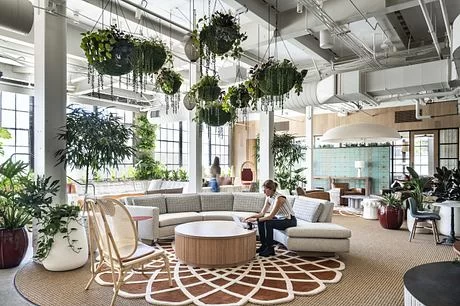Historic Building Office Rentals: The Charm of Classic Spaces for Modern Businesses
- Why Choose Historic Building Office Rentals?
- Benefits of Working in a Historic Building
- How to Find the Perfect Historic Office Space
- Common Features of Historic Office Spaces
- Case Studies of Successful Historic Office Rentals
- Where to Find Historic Building Office Rentals
1. Why Choose Historic Building Office Rentals?
Historic building office rentals offer a unique blend of classic charm and modern functionality. These spaces often feature rich architectural details like high ceilings, original woodwork, and intricate moldings, making them an appealing choice for businesses seeking an inspiring environment. The combination of character and the prestige associated with historic properties can enhance your brand's image while providing a comfortable and distinctive work environment.
2. Benefits of Working in a Historic Building
Choosing a historic building for your office space provides several advantages:
- Unique Aesthetic Appeal: Historic buildings often come with architectural features that give your office a distinctive look, making it stand out from other businesses.
- Increased Prestige: Renting an office in a historic building can elevate your company's image, creating a sense of credibility and sophistication that can impress clients and partners.
- Prime Locations: Many historic buildings are situated in prime, central locations that are easily accessible, making them desirable for both employees and clients.
- Space with Character: Unlike modern office spaces that may feel sterile, historic buildings offer unique, inspiring spaces that can motivate employees and create a more engaging workplace.
3. How to Find the Perfect Historic Office Space
Finding the right historic office rental requires careful consideration of several factors:
- Consider Your Location Needs: While historic buildings can be found across cities, it’s essential to select a location that suits your business needs in terms of accessibility, visibility, and proximity to clients or other businesses.
- Assess the Building's Condition: Ensure that the building is well-maintained and that necessary renovations have been completed. It’s important that the space meets modern safety and comfort standards.
- Understand Zoning and Building Codes: Historic buildings may be subject to specific zoning laws or building codes. Make sure the property is compliant with local regulations to avoid any potential issues.
- Evaluate Size and Layout: Historic spaces often have unique layouts and may require more flexible or creative thinking when arranging furniture and office equipment. Consider your business’s needs and how well the space can accommodate them.
4. Common Features of Historic Office Spaces
Historic office spaces offer distinctive features that make them appealing for businesses looking for something unique. Some common features include:
- Exposed Brick and Original Woodwork: Many historic buildings have beautiful exposed brick walls and original wood floors or paneling, which add warmth and character to the space.
- High Ceilings: High ceilings are a hallmark of historic office spaces, providing an open, airy feel that can make a space feel more expansive.
- Large Windows: Historic properties often feature large, expansive windows that allow natural light to flood the space, creating a bright and welcoming work environment.
- Architectural Details: Intricate moldings, decorative plasterwork, and grand staircases can add a sense of elegance and sophistication to the space.
5. Case Studies of Successful Historic Office Rentals
Numerous businesses have successfully embraced the charm of historic office rentals. For instance, a well-known tech company in New York City moved its headquarters into a renovated 19th-century building, benefiting from the building's central location and unique aesthetic. The space not only provided a functional work environment but also helped the company create a stronger, more prestigious brand image. Similarly, a design firm in London chose an old converted factory as its office, taking advantage of the building’s spacious layout and distinctive industrial features to foster creativity and innovation among its employees.
6. Where to Find Historic Building Office Rentals
If you’re considering renting a historic office space, you can find properties in many cities across the country. For the best selection of historic building office rentals, check out 10 Jay Street, a trusted provider offering a variety of distinctive and unique spaces for businesses of all sizes. Whether you're looking for a space with a traditional feel or a more modern take on a historic building, you’re sure to find something that fits your needs.









